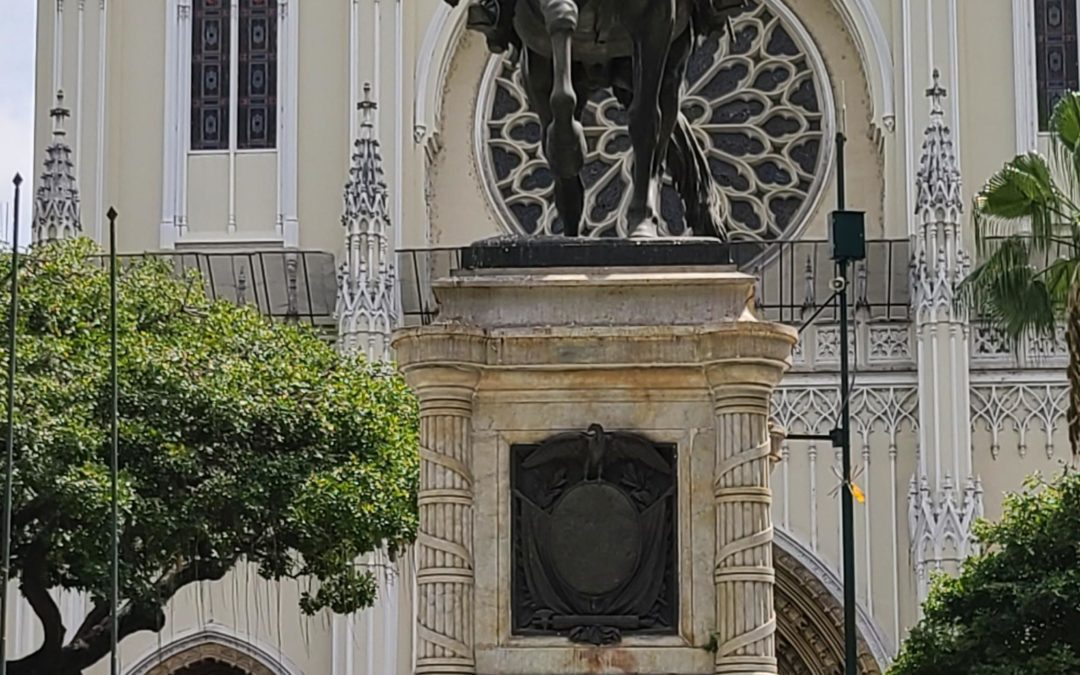Zee and I just returned from a long overdue trip. Zee had just graduated from Wooster with dual degrees in theater (behind the scenes) and history. I had not been out of the office for a non-work trip in five years. Mind you; this was also work-related. It would seem that I can make anything work-related. About fifty veterinarians and some of their family members headed to the Galapagos to learn about the special animals there.
While I love many things about Kentucky and the Midwest, it is time-consuming to get to neat places. In order to meet up with the vet group in Guayaquil, we had an eighteen-hour layover there. I had never been to Ecuador before, so despite the fact that the hotel had air-conditioning and wifi, Zee and I headed out to explore.
After a visit to the chocolate museum and factory, we spent more money on chocolate than we spent on everything else the entire rest of the day. It took about three minutes to consume what we bought. We headed with our new friends to the next item on my list of things to do.
Iguana Park is right across from a cathedral that has the most amazing stained glass. There was an amazing amount of history on the walls. It was a shaded, cooler spot on our walk.
Without realizing we were there, I spotted iguanas hanging out on the park’s lawn. These were larger than the pet trade iguanas that mostly come from Costa Rica. I did ask if they were the same species,
but there was a language barrier. I had been so busy before we left that I hadn’t brushed up on my Spanish at all.
We would see a lot of iguanas on the trip, but these are land iguanas, not the marine iguanas of the next-door Galapagos. Living outside near the equator, they got all the vitamin D that they needed.
I’ve seen baby iguanas in Costa Rica, but the adults there were high in trees, and it was hard to see them walk. Some of these were in the trees, but many were on the ground eating. These iguanas walked up on their legs because they got an adequate amount of sunlight which produced Vitamin D, which allows calcium to be at proper levels in their body. Unfortunately, too much Vitamin D causes the calcium to form compounds that crystalize or salt out in the organs. Organs that don’t do well with rocks in them, like the kidneys and heart.
Nutritional or metabolic bone disease is common in pet reptiles. It is also known as fibrous osteodystrophy, osteomalacia, secondary nutritional hyperparathyroidism, osteoporosis, or rickets and is the most commonly seen nutritional problem in reptiles. MBD is caused by a calcium/phosphorous imbalance in the body. Calcium is needed for muscle (and heart) contractions. Therefore a temporary solution is to borrow it from the skeletal system. Unfortunately, this causes a weakening of the skeletal structure as well as the carapace and plastron of turtles and tortoises. After there is no more calcium to steal from the bones, there can be tremors, severe weakness, and bone fractures.
Diets high in phosphorous (crickets and other foods) allow the formation of calcium phosphate, which furthers the loss of calcium.
Too little UV light, too little calcium, and too much phosphorus and/or the right balance between the three mean I see few normal iguanas walking with their bellies off the ground. The ones I see generally drag their bellies like a crocodile. These wild iguanas walked on four feet and did not drag their bellies at all. I sat with another vet for about an hour, watching iguanas up on their legs and walking tall as they climbed trees, fought over the best spots, postured, and ate grass, leaves, and pigeon poop. I’m not sure they were supposed to eat pigeon poop, but the young ones did.
In the middle of Parque Bolivar is a statue of Simon Bolivar. Bolivar, Missouri, is near where I grew up and had the matching statue in a park there. I didn’t notice or remember that until we were leaving the park to go on one of the open bus city tours. It would seem that healthy, happy iguanas were too much of a distraction.

